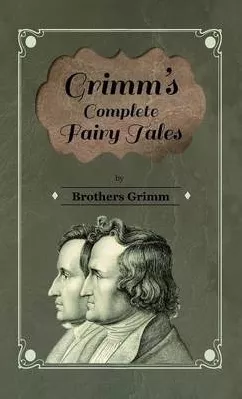Celebrating Wilhelm Carl Grimm
Published on 24th February 2021

Most of us know some of Grimms' fairy tales, the stories were read to us when we were young, or when a bit older we could read them ourselves. Titles like Little Red Riding Hood, Rapunzel, Snow White and the Seven Dwarves are famous.
I used to think that the brothers Jacob and Wilhelm Grimm went out and visited old people on their farms and in their rural homes to write down the fairy tales in order to preserve them. Preservation of the tales was certainly the aim, but Jacob and Wilhelm hardly ever left their desks. They had a network of friends and acquaintances, who remembered fairy tales and wrote them down.
Only a very few of their helpers came from a rural background, the majority of them were well-to-do and had a good education, some belonged to the landed gentry. The identity of many of the individuals who contributed to the Grimms' collection was only discovered in the 20th century, and it became clear that the collection was not based on field research in rural parts of Germany.
One of their main contributors, Dorothea Viehmann, was the daughter of an innkeeper and a tailor's wife. She was from Huguenot extraction and spoke French as well as German. Between 1813 and 1815 (the year of her death) she told the Grimm brothers at least thirty six tales, many picked up from travellers who stayed in her father's tavern. Others, however, she knew herself and were of French origin.
In addition to the fairy tales provided by this group of contributors, the Grimms found sixty fairy tales in books and included them in their collection. Amongst these are several from the collection Tales of Mother Goose by Frenchman Charles Perrault.
Wilhelm Grimm, whose birthday we remember, was born on 24 February 1786 in Hanau near Frankfurt (Main). He was the second of a family of eight brothers and one sister (three brothers died as infants). Like his older brother Jacob, he studied law, but did not practise it. He was more interested in literature, an affinity he shared with Jacob and which led to their collaboration.
Wilhelm and Jacob Grimm published their collection of fairy tales in two volumes, in 1812 and 1815. There were many editions, and Wilhelm, as the editor, kept altering the texts. Some fairy tales were taken out of the collection in a following edition, and others were made more acceptable.
The original title was Children's and Household Tales, but due to their sexual undertones and gruesomeness they were in fact not meant for children at all. The story of Little Red Riding Hood (from the Perrault collection) is a story of warning for young women against preying men and quite bloody in the original version. In the original version of Rapunzel, Rapunzel asks the witch one day why her clothes don't fit her but strain around her waist. That is how the witch finds out about the prince's visits.
Many of the two hundred fairy tales spread across two volumes published are not well known now. In many of them children are murdered, cooked and eaten. Originally the biological mother was the baddie , she resented her children and wanted to get rid of them. This was later changed to step-mother. The first editions of the two volumes did not sell well; this might be an indication that even then people's sensibilities were hurt by the violence in the tales. Had Wilhelm Grimm not altered the stories, generations of us would not have known the enjoyment of these fairy tales.